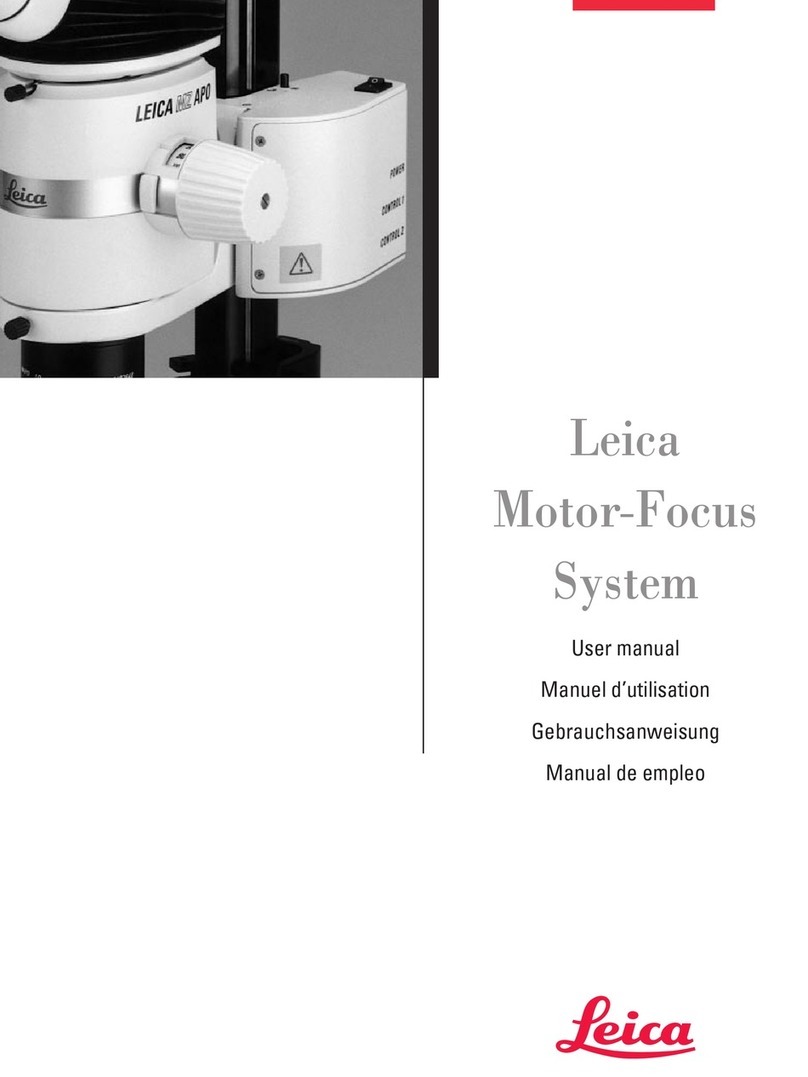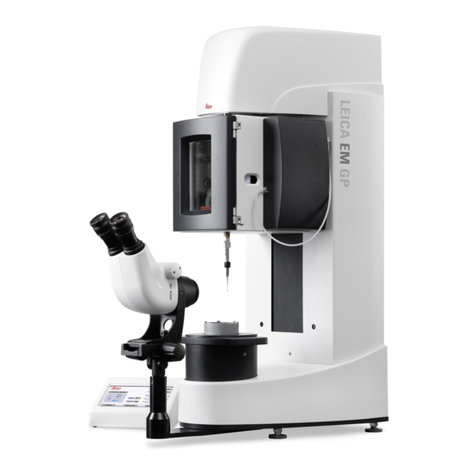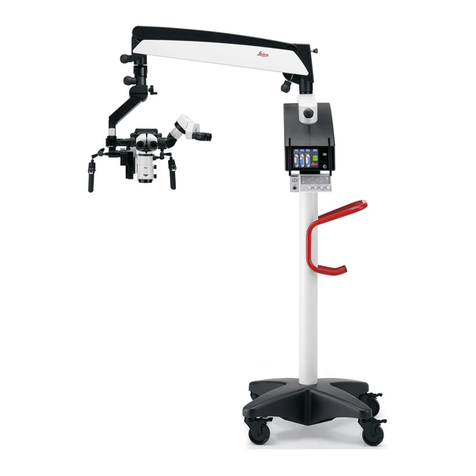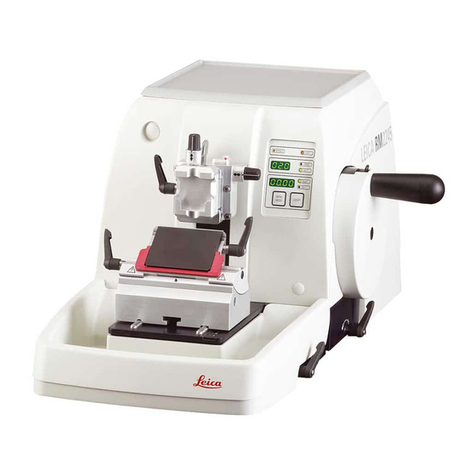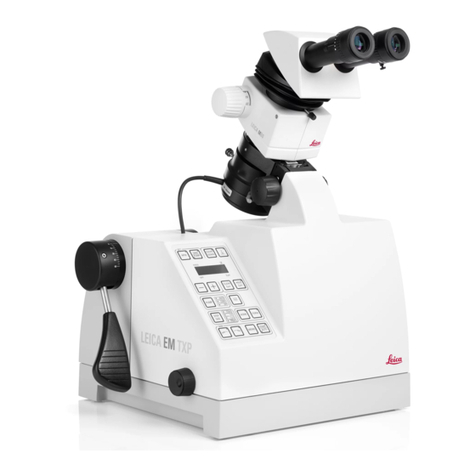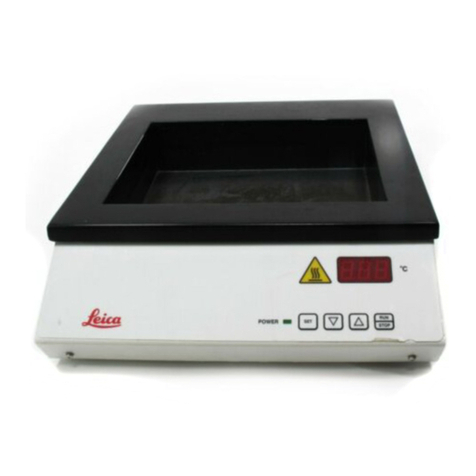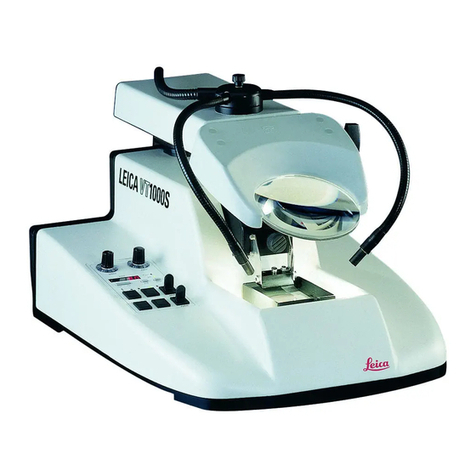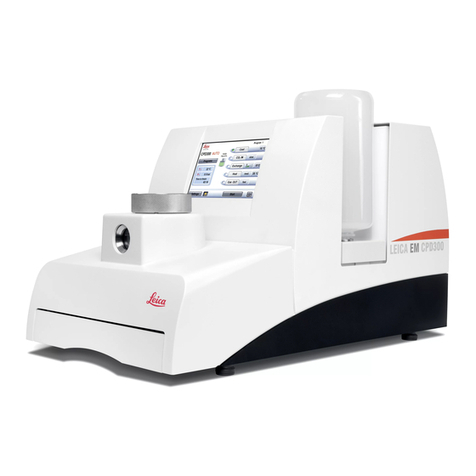
CONTROLLED COPY
Centre for Biological Engineering
Standard Operating Procedure SOP194
Title: Use and maintenance of Leica RM2125 RTS rotary microtome.
Location: H27
Version 001 Effective Date: 24.05.2021 Review 24.05.2023
Written by: Sotiria Toumpaniari
Page 8 of 11
CAUTION: The handwheel continues turning if it has been rotated very quickly and then released – this can
cause crushing or other injuries!
8. Set the desired section thickness using the section thickness setting knob (26) at the front of the
microtome on the right, or check the set value in the viewing window (25). The red indicator (24)
indicates the selected section thickness (on the scale).
9. Use a different area of the cutting edge for trimming than for sectioning.
10. To do so, move the knife holder laterally on the knife holder base accordingly (see Chap. 5.9.7) or,
when using the knife holder base without lateral movement, move the knife or disposable blade in
the knife holder.
11. For sectioning, turn the handwheel (15) evenly in a clockwise direction.
12. Pick up the sections and mount them on microscope slides.
5.3.8. Changing specimens
Note: Lock the handwheel and cover the knife edge with the knife guard prior to any manipulation of knife or
specimen, as well as prior to changing specimens and during all work breaks!
1. Move the specimen to the upper end position by turning the handwheel and engage the handwheel
lock.
2. Cover the sectioning edge with the knife guard.
3. Remove the specimen from the specimen clamp and mount a new specimen.
4. Run the object clamp with the coarse feed back far enough until the new specimen can start being
cut.
5.4. Cleaning and Maintenance
5.4.1. Cleaning
Note: Always remove the knife / blade before detaching the knife holder from the instrument. Always put the
knives back into the knife case when not in use! Never place a knife anywhere with the cutting edge facing
upwards and never try to catch a falling knife! When using cleaning agents, observe the manufacturer's
safety instructions and the laboratory regulations valid in the country of use. Do not use any of the following
for cleaning the outside surfaces of the instrument: alcohol, detergents containing alcohol (window cleaner!),
abrasive cleaning powders, solvents containing acetone or xylene. Xylene or acetone will damage the
finished surfaces! Ensure that liquids do not enter the interior of the instrument during cleaning!Move the
specimen to the upper end position by turning the handwheel and engage the handwheel lock.
Before each cleaning, carry out the following preparatory steps:
•Move the specimen clamp to the upper end position and activate the handwheel lock.
•Remove the blade from the knife holder and insert it in the receptacle at the bottom of the
dispenser, or remove the knife from the knife holder and put it back in the knife case.
•Remove knife holder base and knife holder for cleaning.
•Remove the specimen from the specimen clamp.
•Remove section waste with a dry brush.
•Remove specimen clamp and clean separately.
Instrument and outside surfaces:
•If necessary, the varnished outside surfaces can be cleaned with a mild commercial household
cleaner or soap water and then be dried with a moist cloth.
